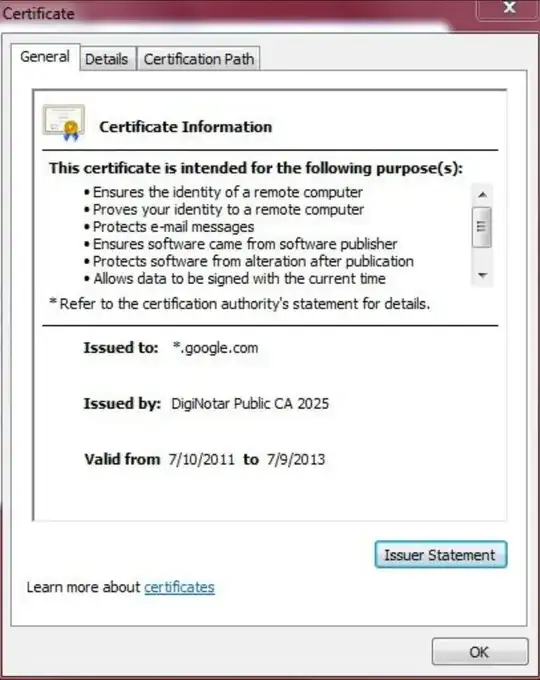I was reading How are possible uses for X.509 (SSL) certificates denoted? here on Security SE. It begins with:
X.509 certificates can be used for servers, clients, email, code signing and more applications.
http://twitpic.com/6gdxaqindicates that a certificate...
This is the twitpic image. It was from an incident in 2011, where a rogue google.com certificate from DigiNotar had code-signing capability. I wanted to look at the image more closely, then noticed something I don't understand.
When viewing the full-sized image in Google Chrome browser, I see a long Cloudfront domain URL. It starts with http://d3j5vwomefv46c.cloudfront.net/photos/large/390320594.jpg? and has three parts concatenated to the end of it.
Here's my question: What do the three parts (key, Key-Pair-ID and Signature) mean in that Cloudfront URL?
- key=409511&Expires=1358170888
- Key-Pair-Id=APKAIYVGSUJFNRFZBBTA
- Signature=ZLwi3pS71nfx0MzKMdFMQZYwYtKjzxnoIgLxDa6X16o3K7pjtywH-Sqm7rvZqe3XH0ELZb4fQffF5lWG2h2PF4ONGCoCL6zQKfr~Ep9raiUPM1pO1LbrUDZEJBoYSURAecyNJsctRd9wJgKoFnEkHnSfvsNexYx-Y91cTVmYPQc_
Is it analogous to the keys and signature for X.509 SSL certificates? (That's was why I included so much information about the prior question, in case of similarities.) Or does it pertain to authentication, instead of authorization?
